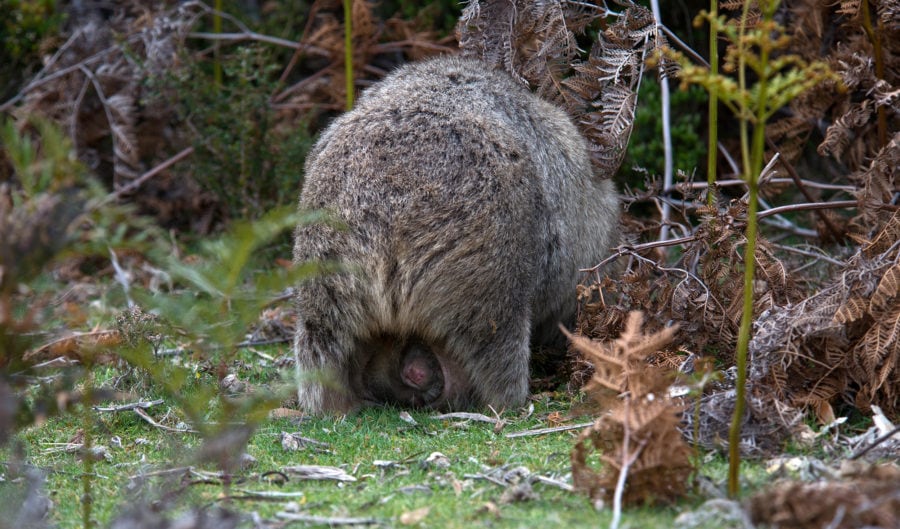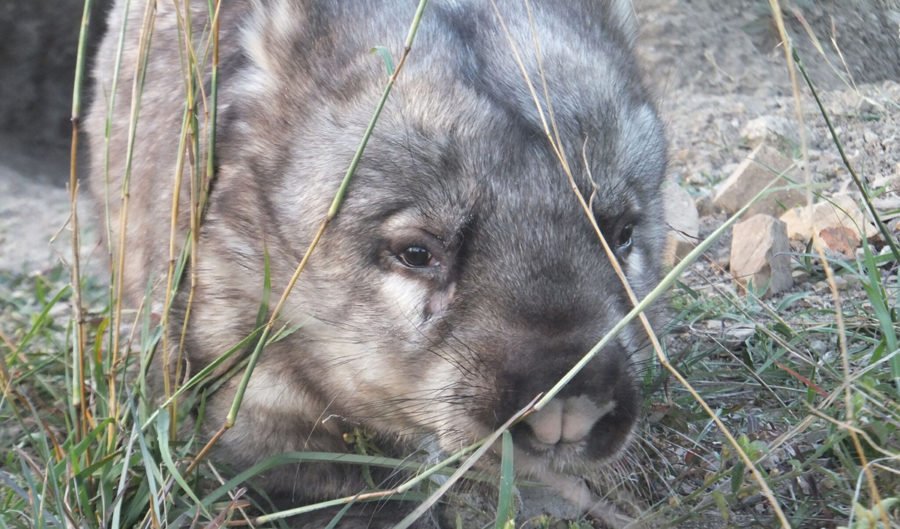Wombat bums: there’s more than meets the eye

Scientist Alyce Swinbourne is the unofficial expert on wombat bums. Her research into wombat reproduction means she’s had to get up close and personal with the shapely marsupial mammal on many occasions. And what may look like a soft, plump derrière, is actually quite the opposite.
A wombat’s backside is made up of four fused plates surrounded by cartilage, fat, skin and fur, which it uses to mate, excavate and defend. In fact, using its exterior to block its burrow is one of its primary defence mechanisms, not only against predators, but also other wombats.
Bum crushing
There are countless stories about fox and dingo skulls being found outside wombat burrows, prompting speculation that the wombat uses its big rump to crush predators.
OUTFOXED BY A WOMBAT 🦊 Wombats really don't like unwelcome guests in their burrows 😬 Check out this extremely rare photo…
Posted by Mange Management- Treating Mange in Wombats on Monday, 22 June 2020
“A wombat’s butt is certainly tough enough to do this, and it is an important defence mechanism against attack,” says Alyce.
“Wombats use their butts to block access to their burrows to unwanted guests, so a very hard butt would be the first thing a fox encountered if it ventured down a wombat’s burrow.”
However, Alyce says it’s also possible the wombat was just doing some “spring cleaning” and is removing the remains of any dead animals. “This happens fairly frequently,” she says. “Wombats do move between different burrows, and they might also occupy one that was previously used by a fox as a den.”
And they learn to wield their rump from an early age.
“One of the funniest, cutest things I‘ve seen are juvenile wombats throwing their rump around, doing spins, backing into things and kicking. I call these actions ‘zoomies’. It’s obvious they learn from an early age that their rump is their greatest weapon.”
Nipping, kicking
In 2017, Alyce released an important paper about wombat mating techniques, where she observed female wombats bum-biting and kicking their prospective mates.
As part of her research she also needed to extract hormone concentrations from the wombats’ urine, so she developed an important, non-invasive technique: tickling their bums… hard.
Alyce’s husband, Michael, who also studies wombats, recently recorded images from a breeding season. “You could tell it was breeding season just by the state of some of the animals,” Alyce says. “Wombat reproduction is quite aggressive.”
The male wombat can be seen chasing the female wombat, jumping on her back, biting her bum and digging in his claws. “While that sounds intense, it is often the female who initiates the courtship, which consists of an extensive chase, catch and release ritual.
“I observed one female entering her den-mate’s sleeping chamber and aggressively biting him to get him to chase her.”
Basically, rump biting is an important act of foreplay. “As a test of fitness, the male has to wear down the female for a successful joining, and a larger female can cause quite a bit of damage to a smaller male and vice versa. They both have to hold their own.”


